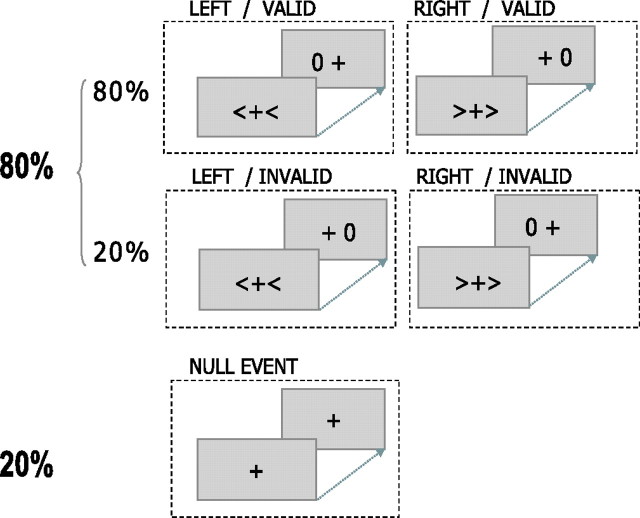Figure 3.
Task. The task was a Posner-type cued choice reaction time task. Subjects maintained fixation on a central black cross against a gray background. A cue in the form of two directional arrows placed on either side of the fixation cross indicated whether the subjects should prepare a response with their left or right index finger. After the disappearance of the cue, a target stimulus was presented to the left or right of a fixation cross. Subjects were required to respond as rapidly and accurately as possible by pressing the index finger corresponding to the side where the target stimulus appeared. In 80% of the trials, the target location was correctly indicated by the cue (valid trials). In 20% of the trials, the cue was incorrect and the target appeared in the opposite direction to that indicated by the cue (invalid trials).

